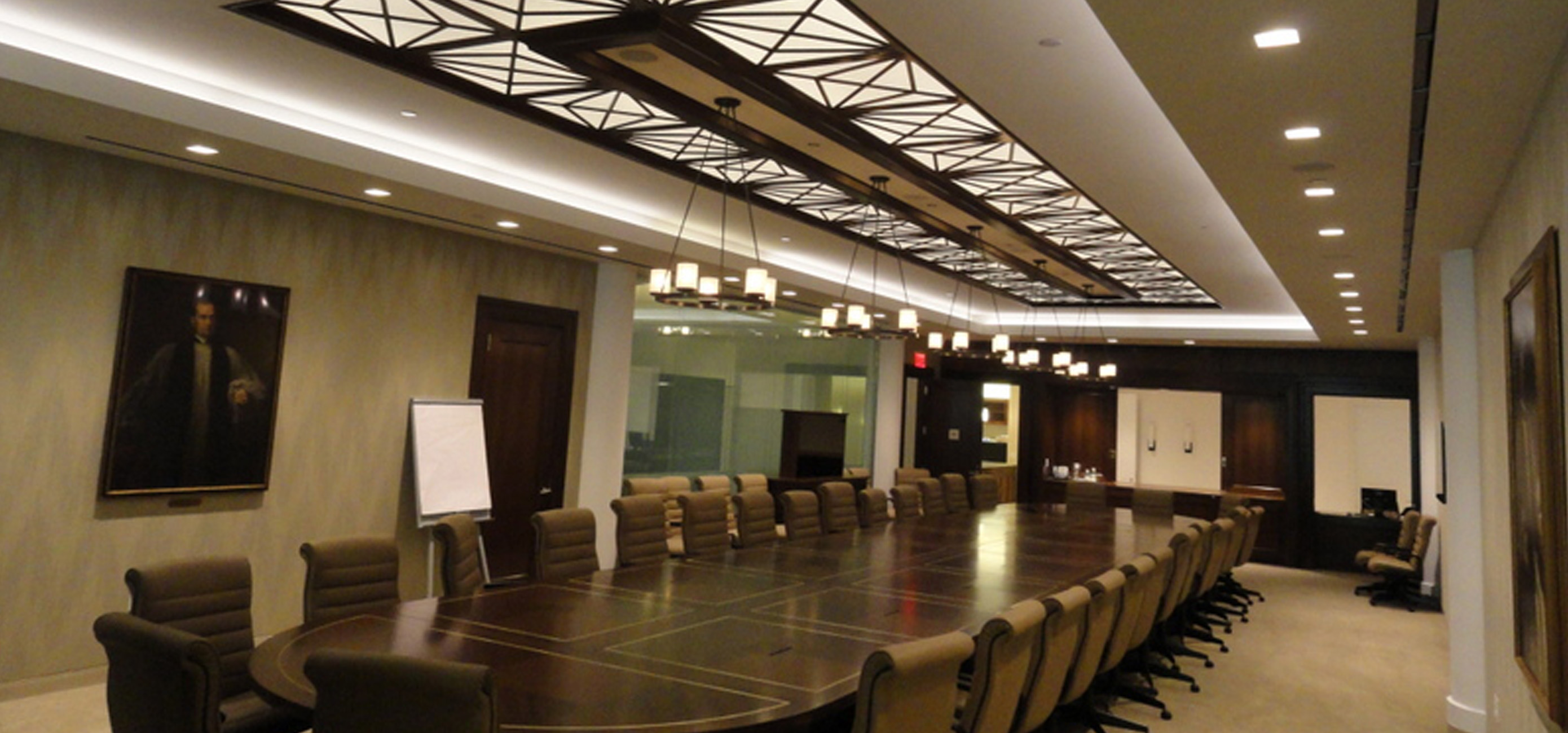The Birds and Bees of Designing Conference Rooms
A conference room is often the heart of an organization’s facility. It is that part of the “hive” where essential information is exchanged. This room needs to look and feel right to instill confidence for room occupants and the room’s acoustics inherently needs to support speech intelligibility.
Designing a room that looks right and enables every room occupant – physical and virtual (via tele or video conference) – to be heard and understood stems from the effective integration of these core acoustic design fundamentals.
- Background noise
- Sound isolation
- Room acoustics
- Amplification
Recognizing these elements in early design phases and collaborating through details and documentation enable stronger more productive meeting spaces.
Background Noise – The buzzing noise created by HVAC systems, lights, AV equipment fans tend to be unnoticed but degrades speech intelligibility. Listening to someone speak through noise is like trying to read through dirty glasses. Particularly for larger rooms where a voice diminishes in volume with distance, low background noise is important to assure the more soft-spoken are included in conversations.
The biggest cost entailed with controlling background noise centers on locating noisy machinery at a distance away from the room. AD’s team has found that background levels modestly lower than conventional standards provides surprisingly better speech intelligibility.
Sound Isolation / Intrusive Noise – Office hive activity noise from outside conference rooms (i.e. conversations in an adjacent corridor) can distract, or obscure speech within a room. Isolation from outside noise requires appropriate doors, windows, walls, etc. While perceived as costly elements, the design process addresses what is most appropriate. For example, a conference room in an office building adjacent to a superhighway requires different windows than a retreat conference center in the mountains. In a recent effort, AD’s team addressed the challenge of minimizing disruptive noise of a conference/training room directly adjacent to a shooting range. The required wall construction was more robust than would be required for a conference room in a quiet office.
Sound Isolation / Privacy – Along the same lines, a conference room where sensitive and confidential decisions are made requires privacy – that activities within the room can not be heard beyond the doors/walls. The difference between privacy and sound-isolation is emphasis.
Room Acoustics – Size, shape, and surface materials affect the pattern of sound reflections in a room—its acoustics. Unruly sound reflections can degrade intelligibility, but in a properly designed room, sound reflections support speech. To illustrate: try holding a conversation on a beach with the noise of the surf and no helpful sound reflections. You will be surprised at how difficult it is to hear and be understood.
Amplification – It is best to design the room so that amplification is only required for recorded or absent speakers. People in the room should be able to communicate easily without being amplified. Verbal communication is best au naturel. Systems for amplifying teleconferences or reinforcing speech are most effective when loudspeakers are located and signal processing is configured to so the sound is heard to originate from the person speaking. The systems need to operate at a level comparable to the sound of a normal person talking and needs to be appropriately equalized for the human speaking voice (avoid excess bass).
Outcome – A well-designed conference room results in a space where people can hear and understand one another. Information is more easily imparted. Voices are heard, people feel like they matter and are viable contributors and more resilient decisions are made.
Christopher Brooks is a Senior Associate and head of the Lancaster, PA office for of Acoustic Distinctions, a leading design firm specializing in acoustic, AV systems, and performance audio design. He can be contacted at cbrooks@ad-ny.com.
